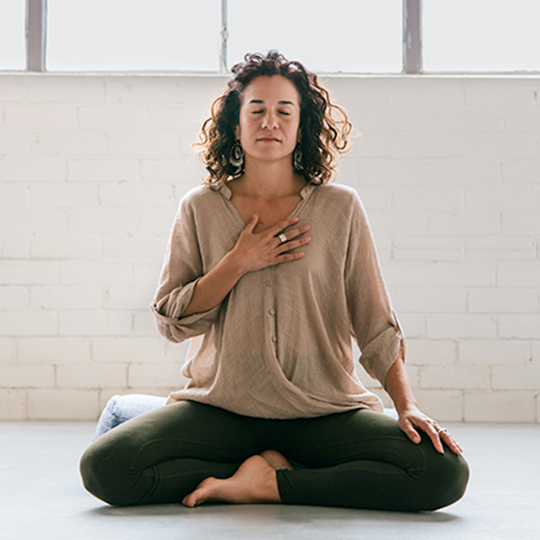
[adinserter block=”1″]
One of the pillars of our Vinyasa Yoga classes is our breath.
The power our breath has over our body, mind and spirit is inspiring; it’s also vital to our yoga practice. It helps us create that beautiful state of flow as we move through our practice. Even in the most challenging power vinyasa classes breath is the undercurrent that guides us. It also helps us tap into our parasympathetic nervous system which calms our body’s physiology. Linking breath with movement will relax a restless mind and allow one to ease into a calmer state of being. The result at the end of class is a harmonious, balanced energy.
In our vinyasa classes, we use a breathing technique called Ujjayi breath (pronounced oo-jai). You may have heard of Patanjali’s Yoga Sutras. This text is widely regarded as the authoritative text on the 8 limbs of yoga. In his 196 short sutras or ‘threads’, there are 3 which reference the physical practice of yoga, (asana). Sutra 2.46 states that our physical postures should balance effort and ease. How do we know if we’ve found that balance? The state of our breath can give us a huge clue!
The pranayama breath practice of Ujjayi should have two qualities: It should be long, and it should be smooth. Ujjayi is also known as the ‘victorious breath’ and has a sound similar to ocean waves. The benefits range from calming our bodies to cleansing our energy channels (nadis) to promoting mental clarity and focus. It is said to refresh our pranic vitality, or in other words, our life force!
In our Vinyasa classes, you will very often hear our teachers encourage you to find your Ujjayi breath at the beginning of class. So! How to find this fantastic breath technique to enhance your asana practice.
This breath involves constricting your vocal cords partially and it will feel similar to whispering. When practising Ujjayi our throat muscles of the glottis slightly constrict, so as we breathe through our nose, there is a subtle whispering sound due to this slight constriction at the base of our throat.
Imagine whispering to someone, but without actually speaking the words out loud. Or similarly, imagine trying to fog up a mirror without opening your mouth. Those are two simple ways to feel this slight constriction. Keeping that, simply start to breathe through your nose a 4-count inhale, and a 4-count exhale. You have found Ujjayi.
The tricky part can be staying committed to Ujjayi throughout your whole practice, especially in moments of challenge like side plank or after your twentieth chaturanga! But the beautiful thing about your breath is it can act as a gauge throughout your practice to discover if you are pushing yourself too much, or not enough!
If you can keep a steady cadence of Ujjayi breath easily throughout your practice, it might be a sign that you can explore your edge and challenge yourself a little more! If you are constantly losing your breath, gasping for air or only breathing very shallowly, you could be pushing yourself too hard. We should have to work to keep our breath steady, but we shouldn’t be pushing our bodies at the expense of our inner peace. Keeping our Ujjayi breath long and smooth helps us stay in our parasympathetic nervous system which accesses the part of ourselves that is calm, steady, and peaceful.
At the end of our practice, Ujjayi helps us leave with that equanimous, balanced, easeful energy. It also gives us something to focus on as we move through the practice. When the mind wanders, recommit to that long, smooth Ujjayi quality of your breath. It will help you anchor your mind back into your body and the present moment.
Another beautiful lesson that the ancient wisdom of yoga gifts us is that no effort in yoga is ever wasted. Even if you only practice this breath for a few moments, it will help you find a little more presence, and become calmer.
“The rhythm of the breath happens 22,000 times a day. When you spend just a few of these times in delight and wonder, it begins to transform the other 99.999% that you take for granted.“
– Radiance Sutras
Written by Katie Tetz
Studio Business Manager | Ever Inspiring Writer & Yoga Teacher for Power Living Australia
[adinserter block=”1″]
Credit : Source Post






